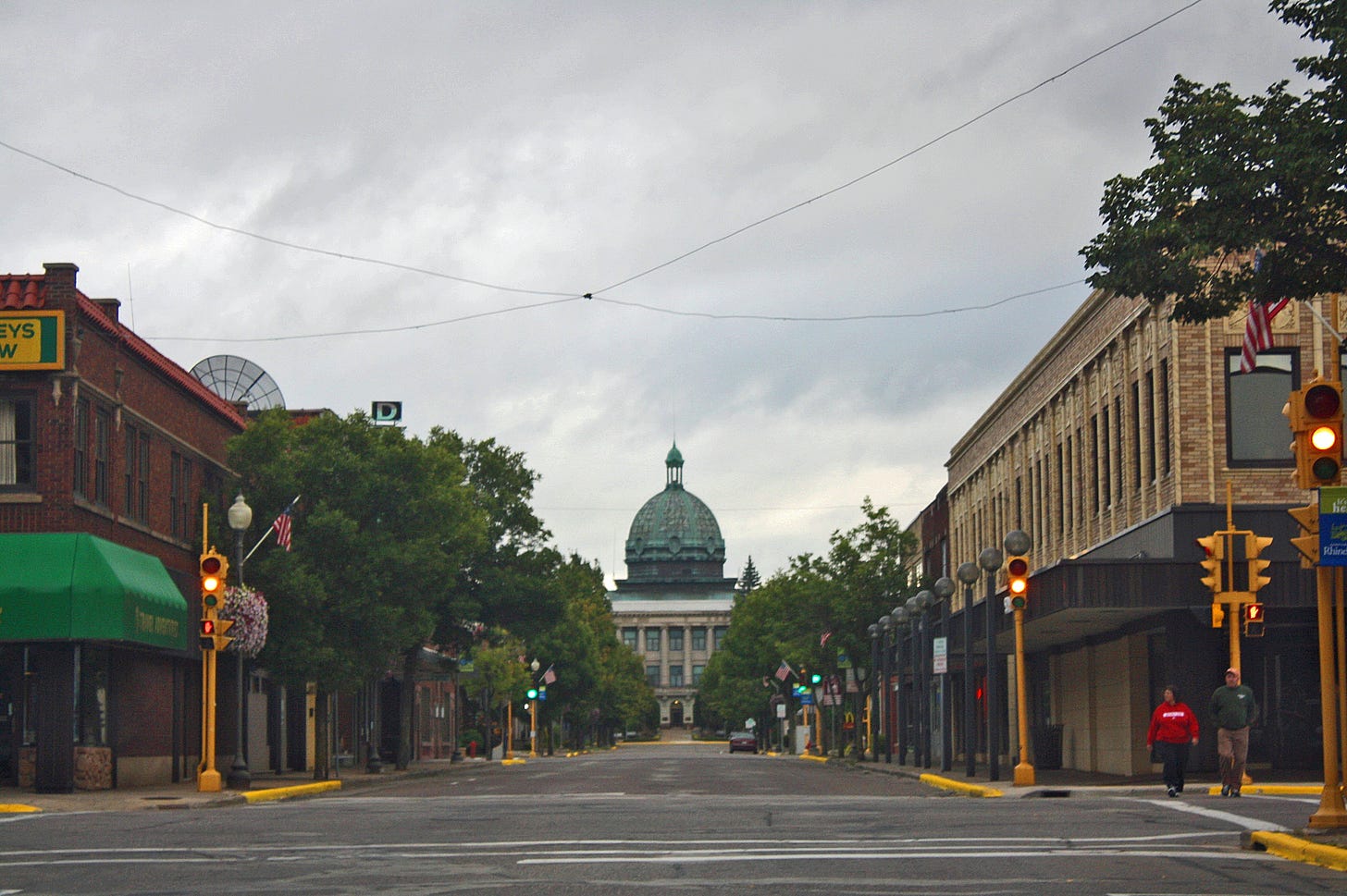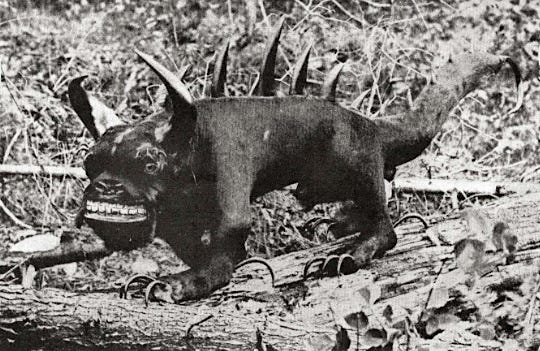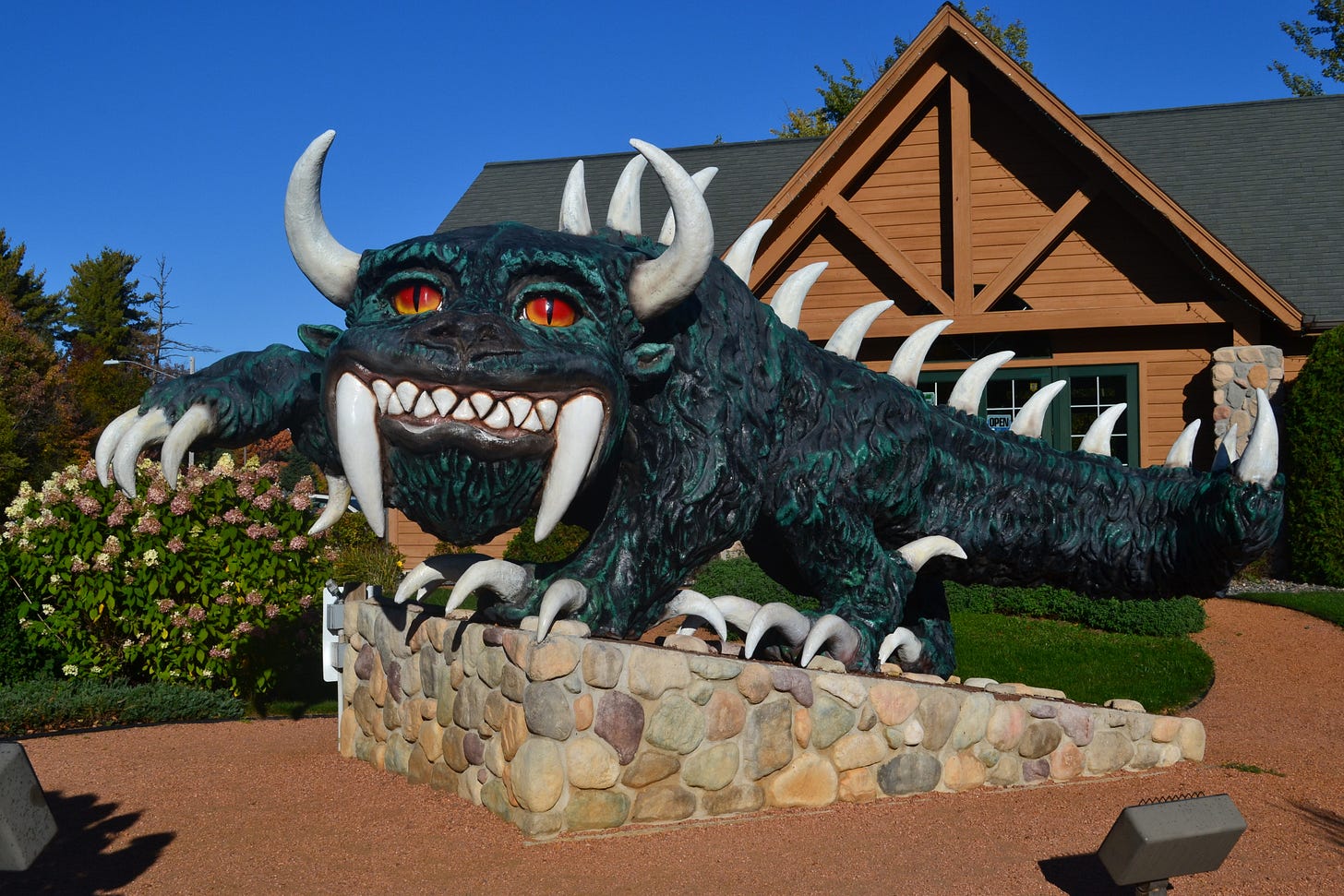Hodag Hustle
For this week, in honor of April Fool’s Day, I decided to take a look at something completely different: hoaxes. For as many genuine witnesses exist, there are at least just as many people willing to try anything to make money, get their fifteen minutes of fame, or both. Today’s fake takes us back over a century, to the humble hamlet of Rhinelander, Wisconsin.
Eugene Shepard was a man who wore many hats, including lumberjack. This put him in the perfect position to see how the logging industry that had sustained Rhinelander’s existence was shrinking away piece by piece with each felled tree. But Eugene wasn’t about to let the town die out without a fight. They needed something new, to draw people in.
Lumberjacks often tell wild stories out in the woods, as a way to pass the time. Eugene was a master of the art and realized this could be the solution to Rhinelander’s woes. One beast in particular seemed especially attention grabbing: the hodag. The name was borrowed from a slang word for a grub hoe or maddox (a pick ax) used by lumberjacks.
It was said that the hodag was born from the ashes of dead oxen, who had absorbed all the hate thrown at them by the lumberjacks, for being such difficult animals to work with. Shepard described the monster that arose from their remains as follows: “”It assumes the strength of an ox, the ferocity of a bear, the cunning of a fox and the sagacity of a hindoo snake, and is truly the most feared animal the lumbermen come in contact with."”
And in 1893, Shepard claimed that he had caught a hodag, distributing drawings of it all over through ads for the Centralia Lumber company. But that wouldn’t satisfy people forever. So in 1896, he upped the ante. The first Oneida County Fair was intended to draw people to the area as well, and reached out to Eugene to build up some excitement.
In a column in the Near North newspaper, Shepard recounted how he and his friends captured the hodag. They blocked its’ den with rocks, and stuck a stick that had a sponge laced with chloroform on the end through one of the gaps. Once the hodag was knocked out, they placed it in a cage for display at the fair.
In actuality, Shepard’s friend, Luke Kearney built the hodag model, and since some of the parts came from the local tanning factory, it ended up with a very authentic stench like a real wild animal. To further sell the trick, two of Eugene’s kids (Layton and Claude) moved parts in the darkened tent where the “hodag” was on display (behind curtains away from the crowd). They even shook a chain link fence to simulate a roar.
The hodag fooled even seasoned locals who knew it was a tall tale going in. And once newspapers got hold of the story, it went racing around the country at breakneck speed. But before you judge anybody for being so gullible, this was an era where new animals were being cataloged by scientists at an impressive pace (to name just a few, the okapi, mountain gorillas and komodo dragons). And people also thought the platypus was a fake, even upon being presented with actual specimens.
And then the Smithsonian got involved, and the jig was up. Shepard admitted he had faked the hodag specimen. Things got rockier from there. Eugene was already an alcoholic and abuser, and died in 1923, cut off completely by his family. Although he was also remembered as a funny, outgoing guy, those aspects of his nature meant Rhinelander shunned the hodag for quite some time.
But in the 1930s, the hodag became Rhinelander High School’s mascot, and the fun-loving side of Shepard was embraced along with the bad parts. Every second weekend in July, the town holds the Hodag Country Festival, drawing in 30,000-50,000 thousand people every year, and drawing in notable musicians like Loretta Lynn, Kenny Rogers and Reba McEntire.
Hodags can be found depicted all over the village, including a fiberglass sculpture on the Chamber of Commerce lawn. They also found their way out of Rhinelander and into other folklore, especially the early tales of Paul Bunyan. However, the hodag’s true legacy is best summed up by Eugene Shepard: “”Thousands of people came to view the Hodag…And not one of them went away without having learned a little more about north Wisconsin.... (A)nd many who came out of curiosity only, have come to make their home with us, either permanent or for a few weeks or months out of the year. Long live the Hodag!””
Sources:
https://wisconsinhistory.org/Records/Article/CS16353
https://www.hodag.com/country-music/
Images:
By Royalbroil - Own work, CC BY-SA 3.0, https://commons.wikimedia.org/w/index.php?curid=17504554
By The Wide World Magazine - https://archive.org/details/TheWideWorldUSV035N205191505/page/n93/mode/2up, Public Domain, https://commons.wikimedia.org/w/index.php?curid=135777191
By The Wide World Magazine - https://archive.org/details/TheWideWorldUSV035N205191505/page/n93/mode/2up, Public Domain, https://commons.wikimedia.org/w/index.php?curid=135777189
By Unknown author - The Living Legend of Rhinelander's Hodag, Public Domain, https://commons.wikimedia.org/w/index.php?curid=127205446
By Gourami Watcher - Own work, CC BY-SA 3.0, https://commons.wikimedia.org/w/index.php?curid=28838534








